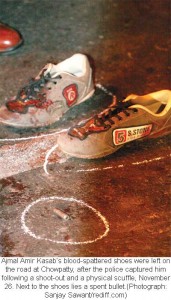 In 2008, India faced six major acts of terrorism in Indian territory outside J&K. Of these, four in Jaipur (May), Bangalore (July), Ahmedabad (July) and Delhi (September) were committed by some members of the Students’ Islamic Movement of India (SIMI), which has had contacts with the LeT. In messages sent before and after the attacks, they described themselves as the Indian Mujahideen (IM). The IM came to notice for the first time in November 2007 when it organized three explosions in three towns of Uttar Pradesh. In a message sent to sections of the media that day, it accused the Indian criminal justice system of being unfair to Muslims. All these four were acts of reprisal terrorism with no strategic objective.
In 2008, India faced six major acts of terrorism in Indian territory outside J&K. Of these, four in Jaipur (May), Bangalore (July), Ahmedabad (July) and Delhi (September) were committed by some members of the Students’ Islamic Movement of India (SIMI), which has had contacts with the LeT. In messages sent before and after the attacks, they described themselves as the Indian Mujahideen (IM). The IM came to notice for the first time in November 2007 when it organized three explosions in three towns of Uttar Pradesh. In a message sent to sections of the media that day, it accused the Indian criminal justice system of being unfair to Muslims. All these four were acts of reprisal terrorism with no strategic objective.
During these strikes, the IM did not attack foreigners either in Jaipur, which has the second largest foreign tourist traffic after Goa or in Bangalore, which is one of the favourite destinations for foreign business companies.
India has been facing terrorist attacks by home-grown jihadi groups since 1993. The defining characteristics of these attacks were:
This was the second attack in Indian territory outside J&K in which all the principal perpetrators were Pakistani nationals. The first one was the attack on the Indian Parliament on December 13, 2001.
- No suicide or suicidal (fedayeen) terrorism. No Indian Muslim has so far indulged in suicide terrorism in Indian territory. The only instance of suicidal terrorism by an Indian Muslim was in Glasgow in UK in June, 2006.
- No barbaric methods such as slitting the throats of the victims. Such barbaric methods are the signature modus operandi of jihadis from Pakistan.
- Reliance more on improvised explosive devices (IEDs) than on hand-held weapons.
- No attacks on foreign nationals except once in 1991 when the J&K Liberation Front (JKLF) killed one Israeli tourist in Srinagar.
Of the remaining two terrorist strikes in 2008, one in Assam in October was committed by a local ethnic group with the help of elements from Bangladesh and the other in Mumbai in November by 10 Pakistani members of the LeT.
The defining characteristics of the Mumbai attack were:
This was the first attack of suicidal (fedayeen) terrorism in the Indian territory outside J&K. All previous fedayeen attacks were in J&K.
This was the second attack in Indian territory outside J&K in which all the principal perpetrators were Pakistani nationals. The first one was the attack on the Indian Parliament on December 13, 2001.
This was the second attack of jihadi terrorists on India’s economic infrastructure. The first was in March, 1993 — also in Mumbai.
The LeT terrorists attacked a mix of targets — human beings as well as economic capabilities, the man in the street as well as the elite and Indians as well as foreigners.
There was a mix of attacks on the man in the street in public places such as a railway station, a public square, a hospital, etc and on the business and social elite in the Taj Mahal and the Oberoi/Trident Hotels.
- This was the first attack by jihadi terrorists on foreigners in Indian territory outside J&K. Since 9/11, there have been 13 targeted attacks on foreigners in the Indian sub-continent — 12 in Pakistani territory and the Mumbai one in Indian territory. Of the 12 attacks in Pakistani territory, five were on Chinese nationals, four on American nationals and one each on French, German and Danish nationals or interests.
- This was the first terrorist attack on Israelis and the Jewish people in the Indian territory outside J&K. It came in the wake of intelligence warnings that the LeT and the SIMI were planning to attack Israeli tourists in Goa. Khalid Sheikh Mohammad had reportedly told his American interrogators that Al Qaeda had wanted to attack the Israeli Embassy in New Delhi. Mumbai has two establishments associated with Israel and the Jewish people — the Israeli Consulate and the Narriman House. The terrorists came by sea and attacked at night. They chose the Narriman House and not the Consulate because it is near the sea and had Jewish people living there, whereas the Consulate has no Jewish people at night.
- There was a mix of modus operandi (MO) — urban warfare of the kind waged by the Hezbollah in Beirut and orchestrated acts of mass casualty terrorism of the kind waged by Al Qaeda; and old terrorism involving the use of hand-held weapons, hand-grenades and explosives and new terrorism involving the use of the latest communications and navigation gadgetry. The TV visuals from Mumbai during the 60 hours that the attack lasted brought back to the minds of professionals visuals, which used to come out of Beirut.
- There was a mix of strategies — a strategy for disrupting the Indo-Pakistan peace process was combined with a strategy for acts of reprisal against India’s close relations with Israel and the West. A strategy for discrediting the Indian counter-terrorism community and policy-makers in the eyes of the Indian public was combined with a strategy for discrediting them in the eyes of the international community and business class.
- There was a mix of attacks on the man in the street in public places such as a railway station, a public square, a hospital, etc and on the business and social elite in the Taj Mahal and the Oberoi/Trident Hotels. These are not ordinary hotels patronized by tourists who travel on a shoe-string budget. These are very expensive hotels patronized by the cream of the international business class, who visit Mumbai not for pleasure, but for business.
- The terrorists did not indulge in classical hostage-taking tactics, where one takes hostages in order to put forward a demand. They took hostages and locked themselves in buildings in order to force an armed confrontation with the security forces.
- The grievances of the Indian Muslims were not the cause of the terrorist attack. Pakistan’s strategic objectives against India, such as forcing a change in the status quo in J&K and disrupting India’s economic progress and strategic relations with the West and Israel were the principal motive.
- Reprisal against the US-led coalition in Afghanistan for its war against Al Qaeda and the Taliban was another motive.
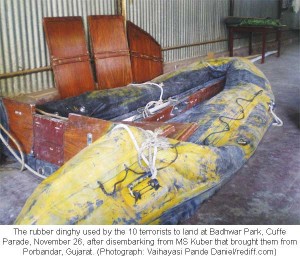 There was considerable criticism of the Indian counter-terrorism community — some justified and some unfair. In September, 2008, there were reports from the Indian and US intelligence that LeT terrorists in Pakistan were planning to carry out a sea-borne terrorist strike against sea-front hotels in Mumbai, including the Taj Mahal hotel. A high-alert was issued. Security was tightened by the Police, the Navy, the Coast Guard and the security set-ups of the hotels. The terrorists, who had planned to strike on September 26, postponed their attack. There was no fresh information in October. No terrorist strike came. The alert was reportedly downgraded in November. The attack came on November 26. It is always a dilemma for the counter-terrorism community as to for how long should a high alert be continued.
There was considerable criticism of the Indian counter-terrorism community — some justified and some unfair. In September, 2008, there were reports from the Indian and US intelligence that LeT terrorists in Pakistan were planning to carry out a sea-borne terrorist strike against sea-front hotels in Mumbai, including the Taj Mahal hotel. A high-alert was issued. Security was tightened by the Police, the Navy, the Coast Guard and the security set-ups of the hotels. The terrorists, who had planned to strike on September 26, postponed their attack. There was no fresh information in October. No terrorist strike came. The alert was reportedly downgraded in November. The attack came on November 26. It is always a dilemma for the counter-terrorism community as to for how long should a high alert be continued.
There was also criticism of what was described as the slow response of India’s special intervention forces, such as the National Security Guards (NSG). While some Western analysts criticized their response as too slow taking about 60 hours, some Israeli analysts criticized it as too hasty, without trying to tire the terrorists out by indulging in talks with them. The NSG did not have the luxury of many options since it was not a classical hostage situation. Their objective was to save as many lives as possible from three different places which were under the control of the terrorists.
There are two ways of assessing the performance of the NSG and the Police. The first is from the number of people killed by the terrorists in these three places — about 100. The second is from the number of people, whom they rescued alive — nearly 1000. Let us applaud them for saving so many people despite the difficulties faced by them.
The most objective assessment of the performance of the NSG and the Police came from Ami Pedazhur, a professor of Middle Eastern studies at the University of Texas at Austin, and the author of the forthcoming book The Israeli Secret Services and the Struggle Against Terrorism. In an article contributed by him to the New York Times (December 19, 2008), Pedazhur wrote: “It is clear that the Indian security forces made some mistakes. However, mistakes are inherent in such crises. At the same time, given the complex nature of the attacks, it seems likely the death toll could have been much higher. After the initial confusion, the Indians seem to have done a thorough job of gathering intelligence and carefully planning their counter-attacks. The execution itself was careful and thorough.”He added: “The Mumbai attacks showed just how difficult it is for large, multi-ethnic states to protect themselves from terrorism, something Americans have known well since 9/11. There is certainly much for New Delhi and Washington to learn from the Israeli experience, but there is no one-size-fits-all solution. While Israel has much to be proud of in how it has handled terrorism, it also has much to be humble about.”Counter-terrorism is much more difficult in India than in any other country because of its large size, federal constitution which gives greater powers to the State governments in respect of crime control and law and order, multi-party system and coalition governments at New Delhi and in many States. Moreover, India is located right in the centre of the Islamic world with Islamic countries to the East, West and North-West of it. It has the second largest Muslim population in the world after Indonesia.Actions against jihadi terrorists — whether home-grown or externally sponsored — have to be attentive to the sensitivities of the Muslim community while acting against the terrorist elements from them. This often creates a Hamlet-like situation for the counter-terrorism community. Political consensus on counter-terrorism related issues is more difficult to achieve than in other democracies.
Certain facts available should give an idea of the magnitude of the terrorist strikes, the like of which the world had not seen before:
- There were 13 incidents of intense firing with assault rifles at different places, including the Chhatrapati Shivaji Train (CST) terminus, the Metro Cinema junction, the Cama and Albless Hospital, outside the Olympia restaurant in Colaba, the lobbies of the Taj Mahal and Oberoi/Trident hotels, and the Leopald Café behind the Taj Mahal Hotel.
- Near the Metro Cinema junction, some terrorists hijacked a police vehicle and went around spraying bullets on passers-by.
- There were seven incidents involving explosive devices — outside the Taj Mahal Hotel, in the BPT Colony at Mazgaon, three near the Oberoi/Trident Hotels, the Colaba market and inside a taxi.
- There were some incidents of throwing hand-grenades — two of them at the Cama hospital and on Free Press Road.
Almost all the terrorist strikes took place against targets near the sea. The terrorists did not venture out into the interior.
- There were three incidents of fidayeen style (suicidal, not suicide) infiltration into buildings followed by a prolonged confrontation with the security forces before being killed. These took place in the Taj Mahal and the Oberoi/Trident hotels and in the Narriman House in Colaba, where a Jewish religious-cum-cultural centre is located, headed by a Jewish Rabbi. Jewish people of different nationalities often congregate there. The centre also has cheap accommodation for Jewish visitors from abroad.
- According to the local authorities, most of the hotel guests who were subsequently rescued by the National Security Guards (NSG) had run into their rooms and locked themselves up when the terrorist forced their way into the lobbies and restaurants and started opening fire. They were not hostages.
- However, the terrorists took six Jewish people hostages in Narriman House. They were found dead when the NSG made their entry and killed the terrorists. It was not known how they died — through bullet wounds or beheading as the jihadis normally do.
- Almost all the terrorist strikes took place against targets near the sea. The terrorists did not venture out into the interior.
Governmental experts played down the possibility of an Al Qaeda inspiration despite tell-tale signs of an Al Qaeda stamp on the strikes. They continued to maintain a silence on the possible role of sections of the Indian Muslims lest any open projection of this cost them Muslim votes. They highlighted the role of the LeT, but without drawing attention to the fact that it is a member of Osama bin Laden’s International Islamic Front (IIF) and that it had many associates in the Indian Muslim community.
The Prime Minister was unwise in reportedly suggesting or welcoming a visit to India by Lt.Gen. Ahmed Shuja Pasha, the Director-General of Pakistan’s Inter-Services Intelligence (ISI), for discussions on the Mumbai attack. One fails to understand what useful results would have come out of it. By failing to act against the LeT, its leaders and terrorist infrastructure even after ostensibly banning it on January 12, 2002, the State of Pakistan had definitely facilitated its acts of terrorism in Indian territory. By sharing the information collected by us at that stage with the ISI chief, we would have helped him in covering up the tracks of the LeT and the ISI before we could complete the investigation. The visit fortunately did not materialize as there was opposition to it in Pakistan, particularly from the Army.
One should not be surprised if the suggestion for the visit had come from the US and the Prime Minister had accepted it just as he reportedly accepted in September, 2006, the US suggestion for setting up a joint counter-terrorism mechanism with Pakistan. The American ploy would have been to divert any Indian public anger away from Pakistan and the Prime Minister should have firmly rejected it.
Three of the most gruesome acts of terrorism since India became independent have taken place in Mumbai — the March 1993 blasts, the July 2006 blasts in suburban trains and the strikes of November, 2008. It is a shame that we have not been able to protect this city effectively, which is the jewel of India. Mumbai is India’s New York and Shanghai. Look at the way the Americans have protected NY after 9/11. Look at the way the Chinese have protected Shanghai. The immediate priority of the Government should have been to set up a joint task force of serving and retired officers from Maharashtra in the Police, intelligence agencies and the Armed Forces to work out and implement a time-bound plan to ensure that 26/11 cannot be repeated again. Mumbai has till now been the gateway of India. The terrorists have exploited it. We should make it Fortress India. Foreign investors will lose confidence in India if Mumbai, where many of the corporate headquarters are located, can be attacked repeatedly with impunity by terrorists.
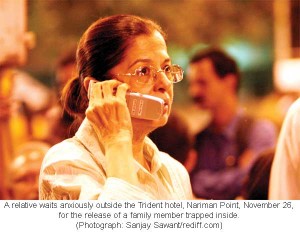 The second lesson was that confidence-building measures with Pakistan should not be at the expense of national security. In the name of confidence-building, there have been too many relaxations of immigration regulations applicable to Pakistan. There has been pressure on the Government for more relaxations from the so-called Indians–Pakistanis Bhai Bhai (Indians–Pakistanis are brothers) lobby. The terrorists have been a major beneficiary of these relaxations. These relaxations have decreased the vigilance of our people. For example, hotels, which immediately used to alert the Police when a Pakistani national or a foreigner of Pakistani origin checked in, no longer do so.
The second lesson was that confidence-building measures with Pakistan should not be at the expense of national security. In the name of confidence-building, there have been too many relaxations of immigration regulations applicable to Pakistan. There has been pressure on the Government for more relaxations from the so-called Indians–Pakistanis Bhai Bhai (Indians–Pakistanis are brothers) lobby. The terrorists have been a major beneficiary of these relaxations. These relaxations have decreased the vigilance of our people. For example, hotels, which immediately used to alert the Police when a Pakistani national or a foreigner of Pakistani origin checked in, no longer do so.
The use of boats and dinghies for the clandestine transport of men and material for terrorist strikes on land is an old modus operandi (MO) used in the past against Israel. The Liberation Tigers of Tamil Eelam (LTTE) had copied it from them. The anti-India jihadis emulated their West Asian counterparts.
The use of boats for transport enables the terrorists to evade physical security checks by road, rail and air. The numerous creeks between India and Pakistan across the Bhuj area of Gujarat enable the ISI and the pro-Al Qaeda Pakistani terrorist organizations to clandestinely transport men and material by sea. Reports that the ISI had planned to use this MO for helping the Khalistani terrorists in the 1990s had led to the Border Security Force acquiring some boats which could be used for surveillance in these creeks.
The success of the terrorists in evading detection by our Coast Guard and the police revealed a serious gap in our maritime counter-terrorism architecture.
The success of the terrorists in evading detection by our Coast Guard and the police revealed a serious gap in our maritime counter-terrorism architecture. If this gap is not quickly identified and closed, the vulnerability of the Bombay High off-shore oil installations and the nuclear establishments to terrorist attacks from the sea would be increased. Many of our nuclear and space establishments — not only in Mumbai, but also in other areas — are located on the coast and are particularly vulnerable to sea-borne terrorist attacks.
The stamp of Al Qaeda was evident in the selection of targets. The Taj Mahal Hotel, old and new, the Oberoi-Trident Hotel and the Narriman House were the strategic focus of the terrorist operation. The terrorist strikes in other places such as the railway station, a hospital, etc and instances of random firing were of a tactical nature intended to create scare and panic.
The strategic significance of the attacks on the two hotels from Al Qaeda’s point of view arose from the fact that these hotels are the approved hotels of the US and Israeli Governments for their visiting public servants and for the temporary stay of their consular officials posted in Mumbai till a regular house is found for them. These hotels are also the favorites of the foreign business elite visiting or living in Mumbai.
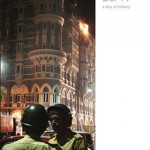 Al Qaeda and pro-Al Qaeda organizations have been critical of India’s close co-operation with Israel and the US. In the past, the ISI had also shown an interest in having Indo–Israeli relations disrupted through terrorist attacks on visiting Israeli nationals in India. In 1991, it had instigated an attack by the Jammu & Kashmir Liberation Front on some Israeli tourists in Srinagar by alleging that they were really Israeli counter-terrorism experts.
Al Qaeda and pro-Al Qaeda organizations have been critical of India’s close co-operation with Israel and the US. In the past, the ISI had also shown an interest in having Indo–Israeli relations disrupted through terrorist attacks on visiting Israeli nationals in India. In 1991, it had instigated an attack by the Jammu & Kashmir Liberation Front on some Israeli tourists in Srinagar by alleging that they were really Israeli counter-terrorism experts.
The attacks on the foreigners in the hotels were selective and not indiscriminate. Available reports indicated that the terrorists were looking for American, British and Israeli nationals — particularly visiting public servants among them with official or diplomatic passports.




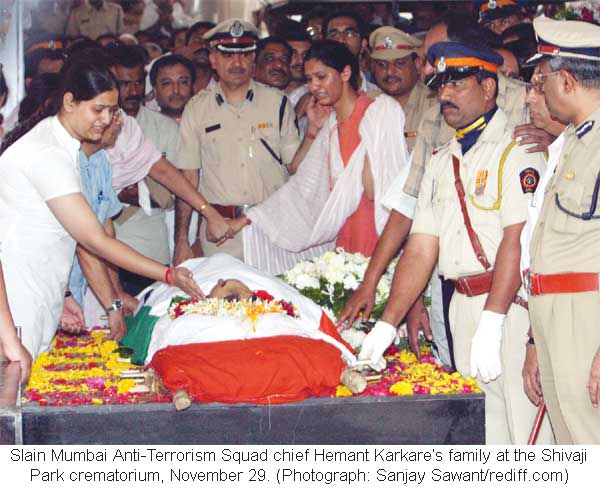

The greatest failure of the Indian Leadership in Delhi after 26/11 was that it failed to retaliate against Pakistani/ISI military targets, selectively or demonstratively, even after it was abundantly clear that this was a Pakistani military operation. It fell for the Pakistani administration line of blaming ‘stateless actors’ as a shield to hide behind and avoid confrontation at the military level for reasons none other than a lack of leadership acumen. Mr. Chidambaram went on his usual spin demanding of Pakistan to arrest and prosecute the perpetrators as if we all lived in a la-la land of wishful surprises. How many more lessons does India need to be given before it realizes that it’s terrorism war from Pakistan is a war with Pakistani military which employs Hafeez Said and others who are willing to sacrifice lives endlessly for their cause while the Pakistani military pulls the string without getting its nose bloody?
I guess the first suicidal attack was on the Parliament.
The most profound mistake in thinking through the Who’s and Why’s of the 26/11 is to accept the popular line of the Security Establishment in India that it was an act of a fringe group and not the Pakistan government. Nothing can be far from the truth. The terrorist group which committed the Mumbai massacre was a well trained Pakistani military team, an elite group similar to the seal team of US which killed Bin Laden in the dark of night inside Pakistan. How else could the Pakistani terrorists have sailed 500 miles on high seas from Karachi to Mumbai, zeroed in on a predetermined landing site better than the marines landing in Normandy on D-Day, moved into position in the presence of local security, and went from one target to another? Furthermore, while this group was committing their carnage, the Pakistani military was in full command monitoring their actions and directing them to targets. It is time we accept the fact that the LeT, the so called fringe group is actually a department of the Pakistani Military with the charter to inflict 1000 cuts on India. If the LeT was not part of the Pakistani establishment, Hafiz Saeed would be dead or behind the bars in Pakistan. This is actually a very wise and a low cost investment for Pakistan since they cannot take on Indian military in a frontal conflict. The bottom line is that the Indian citizens are paying a price for the faulty intelligence and a lack of security wherewithal of India.